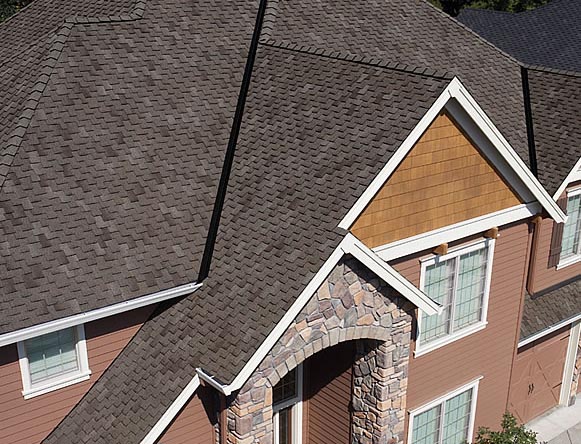Just How Gainesville Roofing Companies Can Transform Your Home's Exterior
Just How Gainesville Roofing Companies Can Transform Your Home's Exterior
Blog Article
Best Practices for Ensuring Correct Roof Ventilation
A well balanced consumption and exhaust vent proportion, typically 1:300, plays a pivotal function, with consumption vents preferably positioned at the lower side of the roof covering for great air access and exhaust vents at the height for cozy air departure. Maintaining insulation away from vents is critical to stop airflow constraint.
Understand Ventilation Basics
Appropriately comprehending air flow fundamentals is essential for guaranteeing the longevity and performance of roof. Efficient ventilation mitigates dampness accumulation and temperature extremes in the attic room, both of which can result in considerable structural damages with time. A well-ventilated roofing system aids in avoiding typical concerns such as mold growth, wood rot, and ice dams, which can jeopardize the stability of the roof materials and the underlying structures.
The primary goal of air flow is to facilitate the activity of air, enabling for a constant exchange in between the interior and outdoor settings. This equilibrium is achieved with a mix of consumption and exhaust vents that function together to preserve optimum air flow. Consumption vents, typically situated along the eaves or soffits, enable fresh air to go into the attic room space, while exhaust vents, frequently positioned at or near the roofing ridge, make it possible for warm, humid air to get away.
Key elements affecting the performance of roof air flow include correct positioning, ample sizing, and ensuring that both consumption and exhaust vents are unobstructed. Routine inspection and maintenance are vital to determine possible blockages, damages, or inefficiencies in the ventilation system, thus safeguarding the roof's efficiency and toughness.
Kinds Of Roofing System Vents
Roofing system vents play a crucial role in keeping reliable attic room ventilation and, by expansion, the general health and wellness of the roof covering system. Various types of roof covering vents are available, each with unique benefits tailored to specific roofing requirements.

Soffit vents are installed under the eaves and work in tandem with roof covering vents to make certain a balanced intake and exhaust system. By enabling cooler air to get in from below, soffit vents assist in the expulsion of hot air via upper vents. Gable vents, located on the exterior wall surfaces of the attic, deal an additional efficient option, especially in homes with gable roofing systems.
Analyze Your Existing Air Flow

Following, consider the age and condition of your roof products and air browse this site flow elements. Older systems might not comply with present building ordinance or may have worn away gradually, decreasing their performance. Conduct a comprehensive evaluation to determine any kind of indicators of deterioration, such as rust, damages, or voids that can compromise the system's efficiency.
In addition, determine the attic room temperature and humidity degrees. Heats and humidity can suggest poor ventilation - gainesville roofing companies. Utilize a hygrometer and thermometer to obtain exact analyses, contrasting them with outdoor problems. Persistent inconsistencies suggest possible concerns that need resolving.
Installment Best Practices
Effective setup of roofing air flow systems is vital for ensuring optimum performance and long life. Correct installment begins with understanding the specific air flow demands of the structure and the roof covering it covers. This involves determining the proper ratio of intake to exhaust vents, commonly sticking to the 1:300 policy, which specifies one square foot of air flow for every 300 square feet of attic floor space.

Consumption vents ought to be mounted at the roofing's lower edge, often in the soffits, to allow trendy air to enter. Exhaust vents, on the various other hand, need to be set up near or at the roof covering's top to promote the leave of warm, moist air.
Seal all air vent connections diligently to avoid air leakages and prospective water infiltration. Use top notch products and adhere to producer guidelines to make visit here certain longevity and effectiveness. Additionally, integrating ridge vents with baffles can substantially improve air flow performance by preventing wind-driven rainfall and snow from getting in the attic room.
Eventually, specific installation of roof ventilation systems reduces possible concerns such as mold and mildew growth, ice dams, and architectural damages, making certain the roof's stability and the building's overall health.
Normal Upkeep Tips
Uniformity in maintenance techniques is essential to guaranteeing the lasting performance of roof covering ventilation systems. During these examinations, guarantee that vents are free of particles, nests, and other blockages that could hinder airflow.
Cleansing the vents is another vital job. Utilize a soft brush or a vacuum to get rid of dust and debris from intake and exhaust vents. Beware not to damage the vent screens or louvers during the process. Additionally, inspect the attic area for any indications of water damages, which can jeopardize the honesty of the roof system.
Appropriate insulation is equally vital. Make sure that attic room insulation does not block the vents, as this can seriously restrict air flow. If any kind of insulation has actually moved or settled, reposition or change it to keep an effective barrier.
Finally, replace any type of harmed or missing out on components immediately. Busted vents, split shingles, or tatty blinking can all add to insufficient ventilation and ought to be attended to right away. Routine maintenance guarantees that the roof ventilation system operates optimally, thereby expanding the life-span of the roof covering itself.
Final Thought
Making sure appropriate roof covering air flow is vital for maintaining the efficiency and sturdiness of a roof system. Adherence to the 1:300 consumption and exhaust vent ratio, coupled with the strategic positioning of vents, is vital. Normal biannual evaluations, particles cleaning, and making certain insulation does not obstruct air movement are critical practices. Implementing these ideal techniques will certainly cultivate a well-ventilated roof, consequently mitigating prospective issues associated with moisture accumulation and excessive heat, inevitably extending the roof's life-span.
A balanced consumption and exhaust air vent ratio, typically 1:300, plays a crucial duty, with consumption vents ideally put at the reduced side of the roof for trendy air entry and exhaust vents at the height for warm air leave. Consumption vents, usually situated along the soffits or eaves, allow fresh air to go into the attic room space, while exhaust vents, typically positioned at or near the roof ridge, allow warm, moist air to escape.
Soffit vents are mounted under the eaves and job in tandem with roofing vents to make certain a balanced consumption and exhaust system. By allowing cooler air to enter from see below, soffit vents assist in the expulsion of warm air with top vents. Adherence to the 1:300 consumption and exhaust vent ratio, paired with the tactical placement of vents, is important.
Report this page